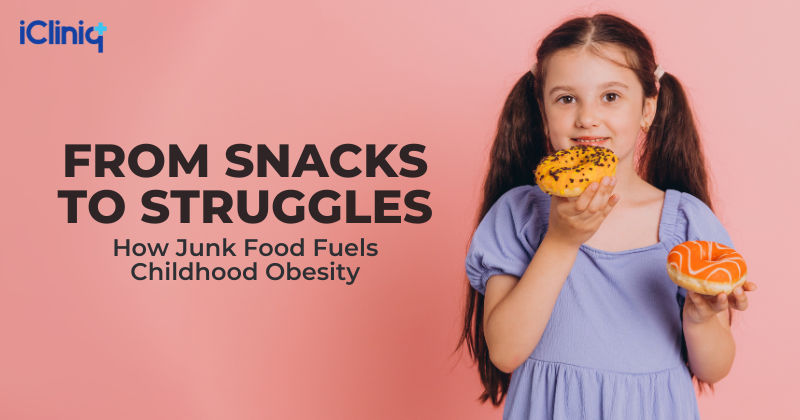From Snacks to Struggles: How Junk Food Fuels Childhood Obesity

The Rise of Childhood Obesity
Childhood obesity has surged worldwide. For the first time, more children are now obese than underweight; about 1 in 10 children aged 5 to 19 fall into this category. This rapid shift reflects a growing exposure to ultra-processed, calorie-dense foods that displace healthier options.
Why Junk Food Packs a Punch
Ultra-processed foods, like chips, sugary drinks, and ready-to-eat snacks, are high in sugar, unhealthy fats, and salt but low in nutrients. They’re heavily marketed, especially to kids, and easily replace traditional meals and snacks.
Snacking with Consequences
Research shows that snacks make up a worrying share of children’s diets; up to 27% of daily calories in kids aged 2–18 come from snacks, especially sweets and salty treats.
SSBs and Fast Food: Behind the Weight Gain
Children who frequently consume sugar-sweetened beverages have significantly higher odds, about 20%, of being overweight or obese. Fast food consumption also increases those odds by around 17%. Similar studies confirm that sugar-sweetened beverages and other junk foods contribute to higher BMI and body fat in children.
Long-Term Risks Extend Beyond Weight
Childhood obesity raises a child’s risk of developing serious conditions like asthma, sleep apnea, type 2 diabetes, heart disease, and joint problems. It also impacts mental health; kids with obesity face higher odds of low self-esteem, bullying, depression, and social isolation.
A Societal Issue, Not Just a Personal One
Childhood obesity is not only a personal issue; it’s shaped by marketing, food environments, and policy gaps. However, parents, caregivers, and communities can play a big role in prevention.
Replacing sugar-sweetened drinks with water, encouraging balanced meals, and limiting ultra-processed snacks are small steps that protect children’s long-term health. It’s time to rethink what’s in our kids’ lunchboxes and snack shelves. The earlier the change, the healthier the future





